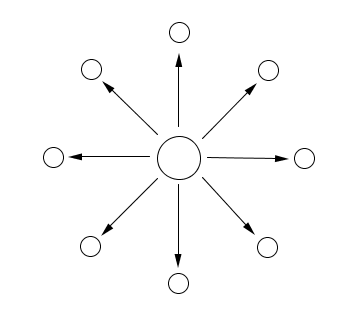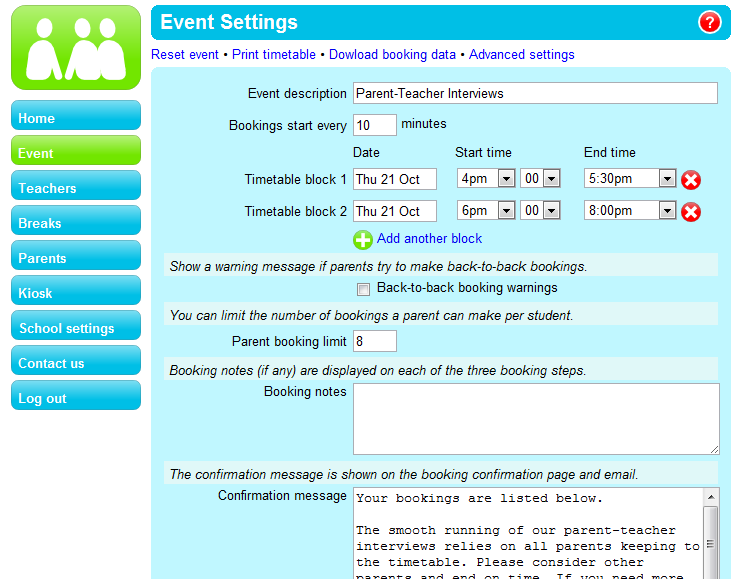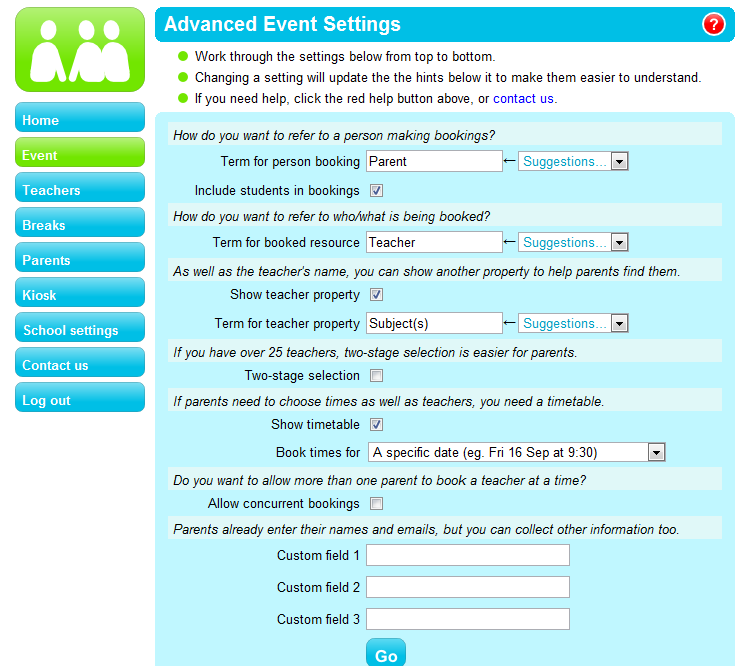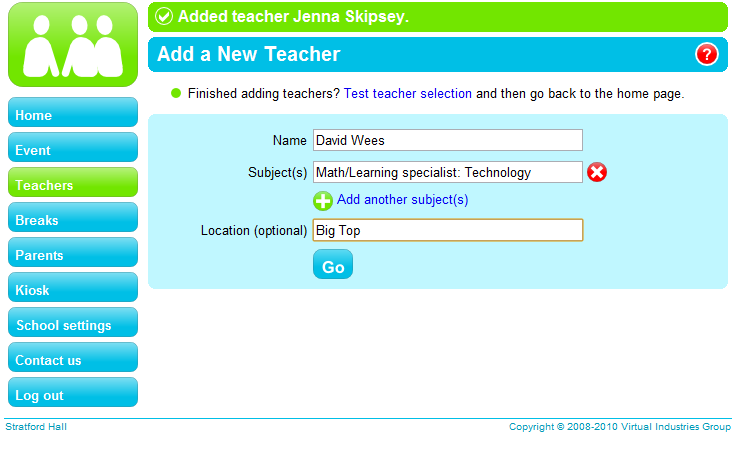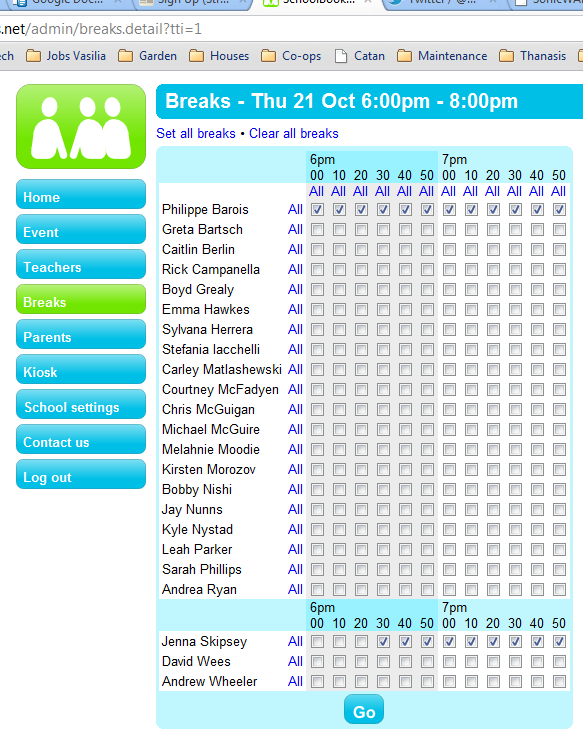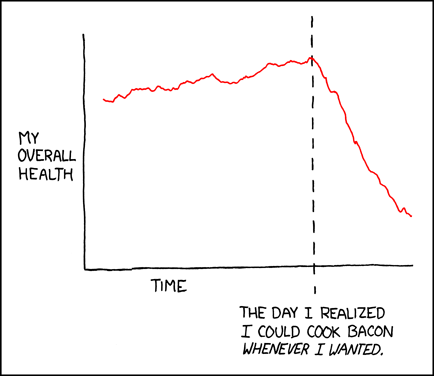Here is a week at my school. This isn’t a typical week, but then no week at my school is. I’m sharing this in the hope that more educators can do the same for their schools.
Monday
As we are a Canadian school we celebrate Thanksgiving during the 2nd weekend of October. So today is a holiday, and I’m at home with my family relaxing. Our students are doing the same; we don’t hand out additional homework for our holidays so our students shouldn’t be too overloaded this weekend although some of our diploma program students are going to be very busy because of their extended essays.
Tuesday
Today I got to work early at about 7am but we have a staff meeting every Tuesday at 7:45am and I wanted to get some work done before the meeting. I actually managed to find time to meet with two teachers before our meeting and also do some work on our Model United Nations parent-permission forms. During the meeting I took notes using a shared Google Doc. We discussed our half-day on Friday when we will get to do some collaborative planning and our monthly Senior school staff meeting on Wednesday. We also hammered out some ideas about how to make our lunch-time supervision more effective.
During the morning we worked out the logistics for embedding a student video from our school’s trip to Kenya. I assisted an 8th grade class in their effort to edit their radio play podcasts. They needed some help learning how to use Audacity. I added our teachers to our online parent-teacher conference booking website which we will be using to schedule all of our parent-teacher interviews in a couple of weeks. In the morning I also spent some time talking about how to promote our story in education and we came up with our Youtube project.
During the day I gave various pieces of advice to a few different teachers, mostly on different technology tools they could use, but also questions about my former students, and what curriculum I covered in Science and what worked. At lunch time I supervised a test for two students who were absent Friday, and after lunch we had our weekly advisory session. Today in advisory everyone shared one good thing, one bad thing, and one thing they were looking forward to.
After lunch I researched resources to use with our Moodle site, graded my student’s exams, trouble-shot a few technology problems people had, and posted a summary of how our school’s booking system will work (mostly so I’ll remember for the next time I have to use it, which could be a while).
Wednesday
I arrived at school early and did some work in the morning. First we had advisory when again I checked in with my students and did an informal poll of how much sleep they are getting. I’ve been doing this almost every day for a while now. It’s been an interesting process; I hope my students are making more of an effort to get some sleep now that someone is keeping track. Some certainly aren’t.
First period I had a couple of students absent so they worked on their projects while I checked in with each of them to review their progress. I found a couple of students who had made false starts, and another who having difficulty collecting data. I recommended she crowd-source the problem (so expect me to ask for help with that later) and she thought that was sensible. Right away she created a Google Doc which she shared with me and we decided to turn it into a form so that data collection was easier.
During the day I set up a website so our athletics director could share information about sports events happening the year. Next I converted a list of parent emails from Outlook 2010 into a text file for our Directory of Community Development. I scanned a copy of our International Baccalaureate Virtual Community agreement for our school and emailed it back to an administrator for the community. In the late morning we had a crisis and I had to run around the school reseting all of the wireless access points. I also shared some ideas with a new math teacher at our school on a project I had suggested earlier that he do. He was clarifying the project and looking for advice on how to get started with it.
At lunch time I supervised students as they ate and then transported them out to the city park next door where the students in K – 9 spend the second half of their lunches. I was disappointed that the 9th grade students seemed to want to just stand around and didn’t show the same initiative from the previous week when they started their own impromptu soccer game. After my supervision, I sat down with some of the other teachers and chatted about teacher stuff.
In the early afternoon I showed our Director of Community Development how to add her own new content to our website and update news items from before, which she was super excited about. She edited an event I had published for her right away. During the rest of the day I continued my research and work on our athletic event website. I also did a bit of touch-up work on my presentation for next Friday’s CUEBC conference.
After school we had our monthly staff meeting. We mostly ironed out our plans for communication with parents which is an area that generally every school can improve. I also presented on using Smartboards as more than a $2000 white-board since we have another 4 of them coming into the school in the next few weeks. After the meeting I ended up having a 30 minute discussion with another teacher and gave her some simple suggestions about how to use Google Docs to improve the collaboration between her students.
Thursday
First thing Thursday morning I met with the athletics director and showed him how to add events to the website I set up the day before. We looked at the form carefully and added a bunch of new fields so he could keep track of more information. During the day he ended up thinking of a few more things which would be useful to collect with each event. On the back-burner is the view of the data which I can see will still need some work to make useful for the parents.
We discovered a problem with our process for sending out parent invitations to our parent-teacher interviews next week. We worked out a simple solution and I sent information on that out to the staff. First period I taught my 11th grade class and I introduced them to the major summative project for their course. They spent most of the period researching ideas and I checked in with each of them to help them with that process. I also worked on my own letters home to the parents for our parent-teacher interviews.
After my class, I helped out the same teacher from Tuesday’s podcast session and showed her how to upload her students’ podcasts to our shared podcast stream. We uploaded the first of what will hopefully be many podcasts after ironing out the process of making sure student identities were kept safe. The first thing the students wanted to do was to listen to the podcast online; they were SO excited.
The other building had a crisis after lunch and I ran over to help trouble-shoot. It turned out that a simple reset of the wireless network got them going again, but I volunteered to come back Friday and help make sure there weren’t any problems. The teacher involved was pretty grateful and carefully watched me reset the wireless routers so she could do it herself next time.
After school I worked for a bit and then headed out to the University of British Columbia Science Mentoring event. I was hoping to meet my mentee for the year, but he didn’t show up, so I was "stuck" having a great conversation with a couple of 3rd year students who were interested in becoming teachers. Neither had heard of either behaviourism or constructivism, so I gave them the 30 second definition of each, and made it clear which side of the fence I was on.
Friday
Friday morning I arrived at school early to have time to double check that our system for booking parent-teacher interviews was going to work. "This," I thought to myself, "is my summative assessment. If I pass this, I look good, if it flops then I’ll have to make my next new project at the school look really good to keep my professional dignity." I showed my head of school exactly what it would look like and he seemed satisfied. Of course we have our backup plan set-up so everything should run smoothly.
We have kind of an unusual day at school. 30 of our students are off at We day, another 10 are away at a volleyball tournament bringing our total senior school down to a whopping 80 kids and only 1 student in my first class. In the morning I created a shared Google spreadsheet so we could keep track of which students were wearing their civvies early (they aren’t supposed to change until after our 2 class; I’m not sure why). I also prepared my lesson plans but then realized I wouldn’t use them until next week. Finally I supervised my one student while she worked away on her project.
We then all headed out to the park across the road from my school and the students played a quick touch-football tournament. Galiano (the blue team) won the tournament after 2 games as they won both their games. Most of the kids had fun although as usual, some kids feel left out when we do physical activity.
In the afternoon we had our professional development which happens about 4 times a year when we have a half day for the students. We worked in the IB Diploma Program group on deciding on what information about our curriculum units we are going to share. We are starting this year to input all of our curriculum, resources, and in-class assessments for our diploma program having nearly finished this same process for our Middle Years program (MYP).
In our MYP meeting I started a conversation about the use of our 1 to 1 laptop program and some best practices on checking to see if students are on-task while using the laptops. We then worked on grading our 10th grade students’ 2nd phase of their personal projects. Our objective in our assessment of their projects is to look at the process they’ve gone through, rather the final piece themselves. We want the students to recognize that although the final product is important, the underlying process they go through to arrive at that final product is more important.
We would normally go out at the end of the day for our nearly weekly "book club" meeting (of course you know what I mean). However this week I have to rush to catch a ferry so I missed the other staff getting together. It’s always been a good way for them to unwind and relax at the end of what is usually a hectic week at Stratford Hall.
